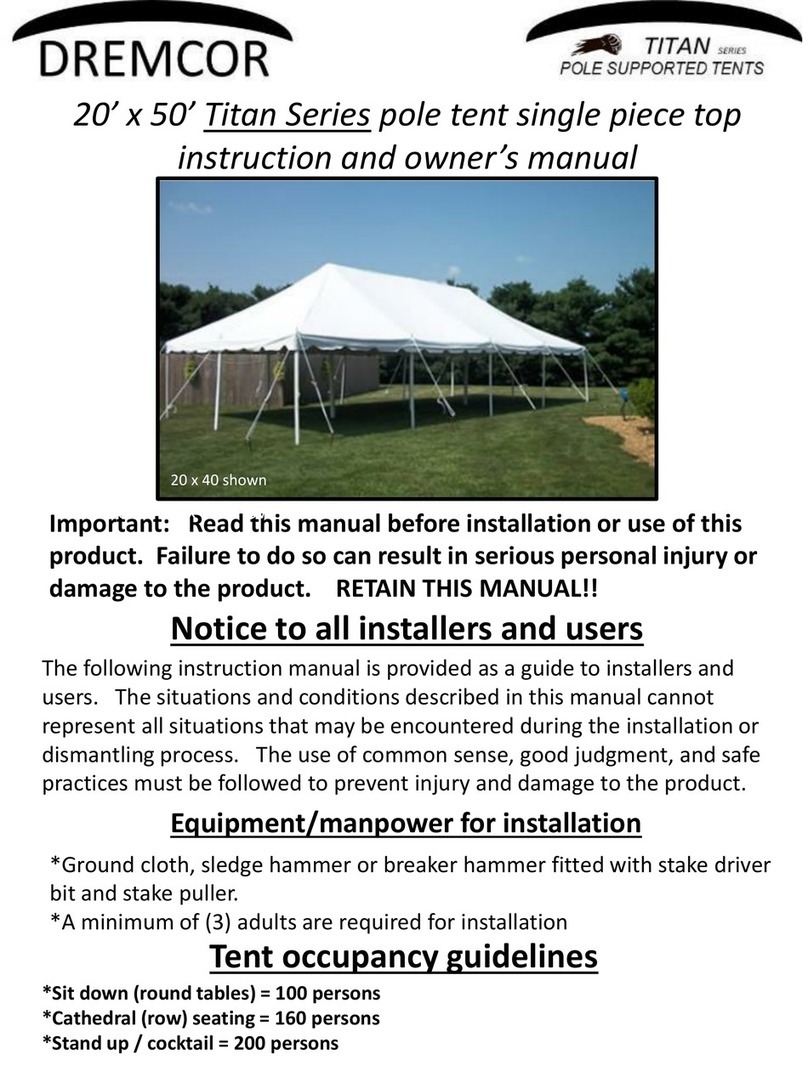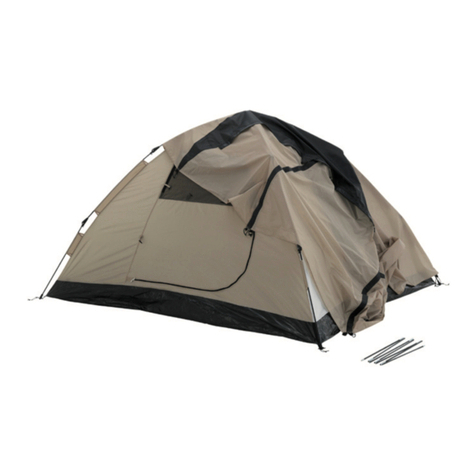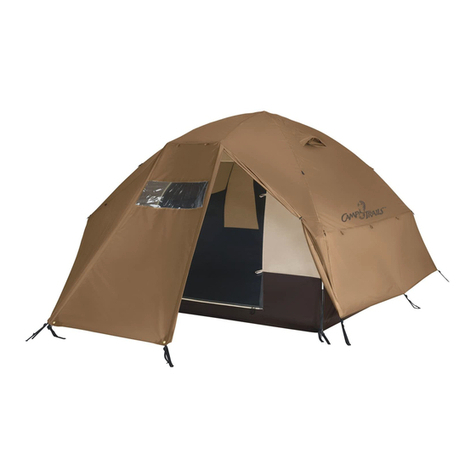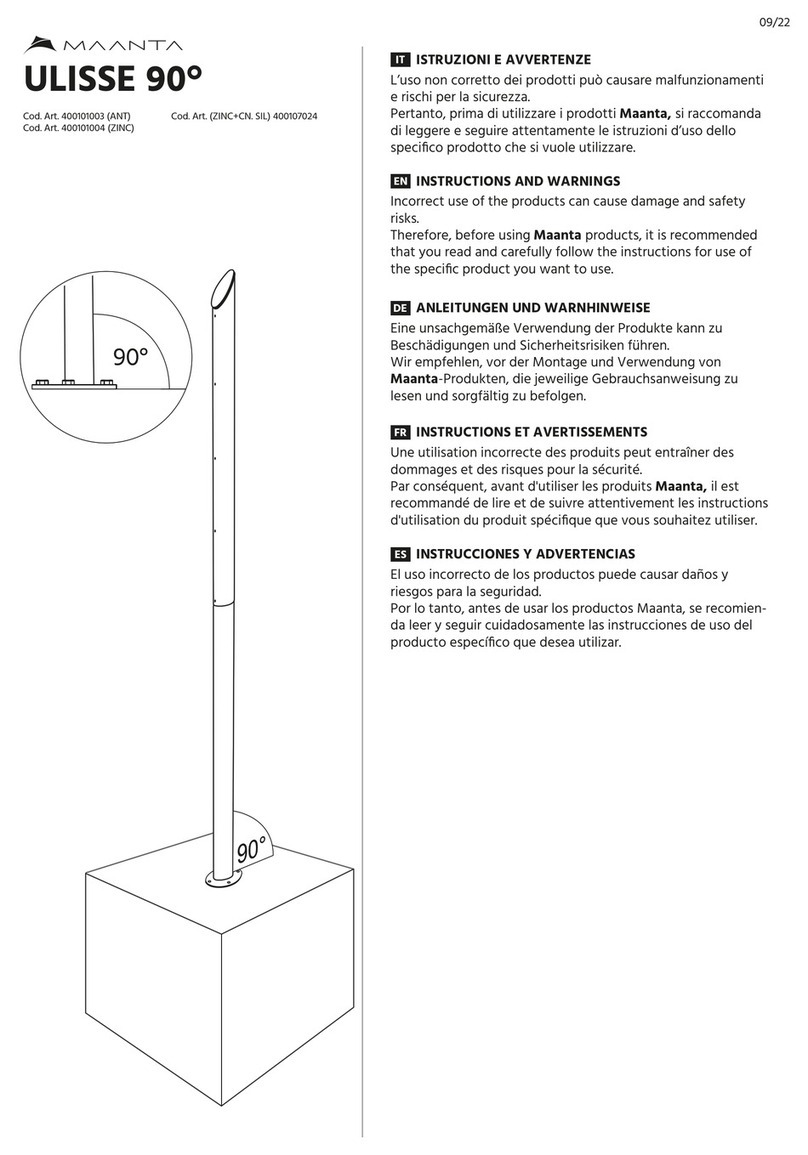
Weather conditions
Weather conditions cannot be predicted and can change rapidly. The installer must use good
judgment, common sense and have knowledge of the current and future weather conditions.
Be aware of the following weather conditions:
*Rain –Rain can cause water to collect in areas on the tent top. This added weight can
cause damage to the fabric. Ground moisture can also cause the frame to sink in addition to
the stakes loosing holding force.
*Wind –Do not install the tent in heavy wind conditions as it may cause damage to the top
and frame. Wind can also cause an existing installed tent to loose tension in all areas.
*Lighting –Do not install a tent in conditions where lightning can occur; All tent installers
and occupants must evacuate until lightning has ceased.
*Snow/hail/ice –Tents and shelters are not designed as permanent structures and cannot
withstand the weight of snow/hail/ice loading. These products must NOT be installed in these
conditions.
Installation site
The installation site is of the utmost importance. The installer must be aware of local building
codes and fire regulations. The installer must also examine the installation site for the proper
anchoring methods. The following must be verified to assure proper installation and prevent
damage to the product.
*Underground utilities –Always contact local utility companies prior to installation. Gas,
electrical, cable, sewer, water, oil, and septic line presence must be verified.
*Overhead utilities/obstructions –Always confirm if overhead utilities or obstructions can
cause personal injury or damage to the product during installation.
*Soil conditions –The soil conditions must be adequate to allow for secure anchoring
*General site condition –the site must be relatively flat, elevated and free of clutter and
debris.
*Area / space –the site must have sufficient space to allow for anchoring
*Accessibility –the site must be accessible for event deliveries such as trucks, vehicles as
applicable
*Evacuation / exit –the site must have adequate evacuation routes in the event of
emergency
Installer responsibilities prior to staking and anchoring:
*Assure that the canopy, tent, shelter, or structure is properly secured.
*Contact all related underground utility “call before you dig” authorities prior to staking.
*Note: Dremcor LLC assumes no responsibility for the method of installation that the installer
chooses or the failure to contact the proper authorities as noted above. Each state, county,
township or city may have unique temporary structure installation codes and requirements so
it is important that the proper codes & requirements are followed. This manual may not
recommend the correct quantity of stakes based on soil conditions at the installation site. It is
the installer’s responsibility to install additional staking or tiebacks as needed.




























